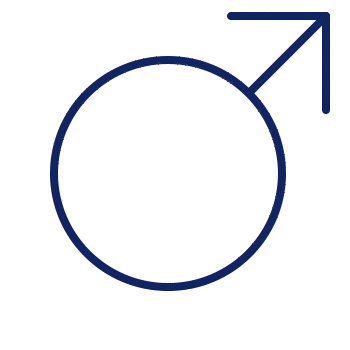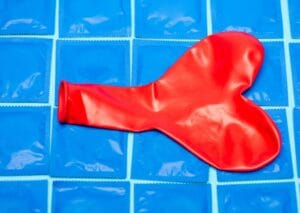If you’ve been searching for how to do Kegel exercises to improve erection strength, control your bladder, or boost your sexual confidence, this guide is perfect for you. To do Kegel exercises, simply squeeze the same muscles you’d use to stop urinating midstream. Hold for a few seconds, then release. Repeat this in sets throughout the day and that’s it! The goal? Strengthen your pelvic floor muscles, which support better erections, bladder control, and sexual performance. More on the full technique below.
Kegels are one of the most underrated tools in men’s health. From improving erectile dysfunction to boosting stamina in the bedroom, they work silently behind the scenes; no equipment, gym, or meds required. Whether you’re doing them on your own or through EM Kegel Therapy in Malaysia consistency is key.
This guide breaks down everything: how kegel exercises work, how to do them correctly, and the real sexual health benefits most men overlook.
What Are Kegel Exercises?
Kegel exercises target the pelvic floor muscles that support your bladder, bowel, and sexual function. For men, these muscles also play a vital role in achieving and maintaining erections, controlling ejaculation, and preventing urinary leakage.
Kegels have gained popularity for their sexual health benefits and they’re now commonly used in both general wellness routines and clinical treatments for men with erectile or pelvic floor concerns.
How Do Kegel Exercises Help?
When your pelvic floor muscles are weak or underused, it can lead to issues like erectile dysfunction, premature ejaculation, and urinary dribbling. Kegel exercises reverse this by strengthening the muscles around the base of the penis and urethra by boosting blood flow, endurance, and control.
They’re discreet, can be done almost anywhere, and don’t require any special tools, though some men may benefit from using a Kegel exercise machine for guided stimulation and faster results.
What Are The Benefits of Kegel Exercises for Men?
 Kegel exercises offer significant benefits for men dealing with pelvic floor issues or looking to improve sexual performance. While results vary depending on consistency and technique, research supports their effectiveness, especially for men with erectile dysfunction.
Kegel exercises offer significant benefits for men dealing with pelvic floor issues or looking to improve sexual performance. While results vary depending on consistency and technique, research supports their effectiveness, especially for men with erectile dysfunction.
Stronger Erections and Better Sexual Performance
Stronger pelvic muscles mean better control over blood flow, which is key to achieving and maintaining erections. Regular Kegels help men with mild to moderate erectile dysfunction improve erection firmness and stamina during intercourse.
For men without ED, Kegels can still enhance sexual performance by increasing ejaculatory control and boosting sensation. A 2005 study published in BJU International found that pelvic floor muscle training significantly improved erectile function in 40% of men with ED.
Better Orgasm Control
Kegels help you develop better control over ejaculation by engaging the muscles responsible for “holding it in.” Over time, this can lead to more satisfying sex, improved stamina, and even more intense orgasms.
Improved Urinary Control
Kegels are especially helpful for men who experience urine leakage after prostate surgery or during activities like coughing or laughing. Strengthening the pelvic floor reduces these involuntary leaks by offering better control over the urethra.
Enhanced Prostate Support
By improving circulation to the pelvic area and reducing pressure on the prostate gland, Kegels may support better prostate health. While not a replacement for medical care, they’re often recommended post-surgery or alongside treatments for chronic prostatitis.
How to Do Kegel Exercises At Home
 Doing Kegel exercises requires targeting your pelvic floor with precision. Here’s how to do it properly:
Doing Kegel exercises requires targeting your pelvic floor with precision. Here’s how to do it properly:
Step 1 – Identify the Right Muscles
The first step is locating your pelvic floor muscles. The easiest way to find them is by trying to stop your urine midstream. The muscles you engage to do that? That’s your pelvic floor. You should feel a lifting sensation around the base of the penis and anus.
Avoid using your abdominal, thigh, or buttock muscles. You’re only targeting the muscles that contract when you stop urine flow.
Step 2 – Perfect Your Technique
Once you’ve identified the correct muscles, tighten them and hold for about 3 to 5 seconds. Then relax for another 3 to 5 seconds. That counts as one rep. Aim for 10 reps per set, three times a day — morning, afternoon, and evening.
As you build strength, increase the hold time to 10 seconds and maintain the same amount of rest.
Avoid holding your breath. Breathe freely and stay relaxed, especially in your upper body. If you feel strain in your stomach or thighs, reset and refocus.
Step 3 – Consistency Is Key
Like going to the gym, progress takes time. You may not notice changes overnight, but after 4 to 6 weeks of consistent practice, you should begin seeing improvements in urinary control or sexual performance.
For men recovering from prostate surgery or those with more advanced ED, using a professional Kegel exercise machine under medical supervision may help accelerate progress by providing guided resistance and better targeting.
Common Mistakes to Avoid For Beginners
 Kegel exercises may sound simple, but many men unknowingly get them wrong. Before you jump into a daily routine, avoid these beginner pitfalls that can stall your progress or worse, cause more harm than good.
Kegel exercises may sound simple, but many men unknowingly get them wrong. Before you jump into a daily routine, avoid these beginner pitfalls that can stall your progress or worse, cause more harm than good.
Mistake 1 – Overtraining the Muscles
Just like you wouldn’t lift weights every hour of the day, your pelvic floor also needs rest. Overtraining can lead to muscle fatigue, pain, or even worsen urinary issues. Stick to 2–3 sets per day and allow time for recovery, especially if you’re just starting out.
Mistake 2 – Expecting Instant Results
Kegels are not a quick fix. It takes weeks, sometimes months of consistent practice to see results. Whether you’re targeting erectile dysfunction, bladder control, or recovery from prostate surgery, patience is part of the process. More on that later.
Mistake 3 – Doing Kegels While Urinating (Every Time)
While it’s fine to locate the right muscle during urination once or twice, doing Kegels during every bathroom trip can actually interfere with bladder function. Do your exercises at other times like sitting at a desk, watching TV, or lying down.
Can You Do Kegels at Any Age?
Absolutely. Kegel exercises aren’t just for older men recovering from erectile dysfunction (ED) or prostate issues. They benefit men of all ages, whether you’re 25 or 75.
For Younger Men – Boost Stamina and Controls Premature Ejaculation
For younger men, especially those in their 20s and 30s, Kegels help improve stamina during sex, prevent premature ejaculation, and increase pelvic awareness. Since these muscles support ejaculation and urination control, building strength early offers long-term benefits especially if paired with a healthy lifestyle.
It’s also an easy way to stay proactive against future ED, particularly if you lead a sedentary lifestyle, smoke, or experience stress, all of which can weaken pelvic floor health.
For Older Men – Support ED and Prostate Recovery
Older men, especially those over 50, often start Kegels as part of a recovery routine after prostate surgery or to manage chronic erectile dysfunction. Pelvic floor exercises help restore muscle function, improve bladder control, and support firmer, more consistent erections over time.
They’re often recommended by doctors after procedures like prostatectomy, where nerve damage can impair sexual performance and continence.
More Than Just Exercise – Tie It to a Healthy Routine
While Kegels can work on their own, their effectiveness multiplies when combined with lifestyle changes such as regular exercise (especially core-focused movements), practice a balanced diet, stress management and cutting down on alcohol and quitting smoking
All these changes contribute to overall pelvic health and reduce risk factors for erectile dysfunction in Malaysia, making Kegels part of a bigger, holistic improvement plan.
How Long Does It Take to See Results?
 Consistency is key when it comes to Kegel exercises. Most men begin to notice results roughly 4 to 6 weeks. But, this depends heavily on how often and how correctly the exercises are done.
Consistency is key when it comes to Kegel exercises. Most men begin to notice results roughly 4 to 6 weeks. But, this depends heavily on how often and how correctly the exercises are done.
What to Expect in the First Month
If you’re doing Kegels correctly you may notice early signs of improvement by week four. These can include:
- Better control over urination
- Slight improvements in erection firmness
- Increased pelvic awareness during sex
Age and Underlying Conditions Matter
Men under 40 with no chronic health issues may see faster results. But for those recovering from prostate surgery or managing long-term erectile dysfunction, progress might take longer. Nerve sensitivity and muscle strength decline with age, thus, patience is key.
If you have conditions like diabetes, obesity, or cardiovascular issues (all linked to erectile dysfunction in Malaysia), your results may also be slower but still very possible with consistent practice and proper support.
FAQ: Kegel Exercises for Men with Erectile Dysfunction
Yes, they can. Kegel exercises help strengthen the pelvic floor muscles, which play a key role in controlling ejaculation. With consistent practice, many men report improved stamina and better control during sex, helping them last longer in bed.
If done correctly, Kegels should not cause pain. Discomfort may occur if you’re using the wrong muscles or overexerting. Pain during or after Kegels can also signal pelvic floor tension or underlying issues. If you experience persistent pain, stop and speak to a healthcare provider.
You may start to notice better control over your bladder, stronger erections, and improved sexual performance within 4–6 weeks of consistent practice. Another sign is feeling a subtle lift or contraction when engaging your pelvic floor muscles. If unsure, tools like biofeedback or EM Kegel therapy can confirm your technique.
No. While locating the pelvic floor muscles involves mimicking the act of stopping urine midstream, actually holding in your pee regularly can lead to bladder issues. Use this method only for identification, not as an exercise.
Only as a one-time method to identify the right muscles. Doing Kegels while urinating can disrupt bladder function if done repeatedly. Once you’ve found the correct muscles, perform Kegels when sitting, lying down, or even standing without involving your bladder.
Start Your Kegel Therapy Journey Today
Kegel exercises are a proven way to support erectile function, bladder control, and post-prostate recovery. If you’re ready to strengthen your pelvic floor and improve your quality of life, He Medical Clinic is here to guide you.
We provide evidence-based Kegel therapy and personalised care in Kuala Lumpur, Penang, and Johor Bahru. Reach out today or Whatsapp us for a private consultation and take the first step toward lasting results.





